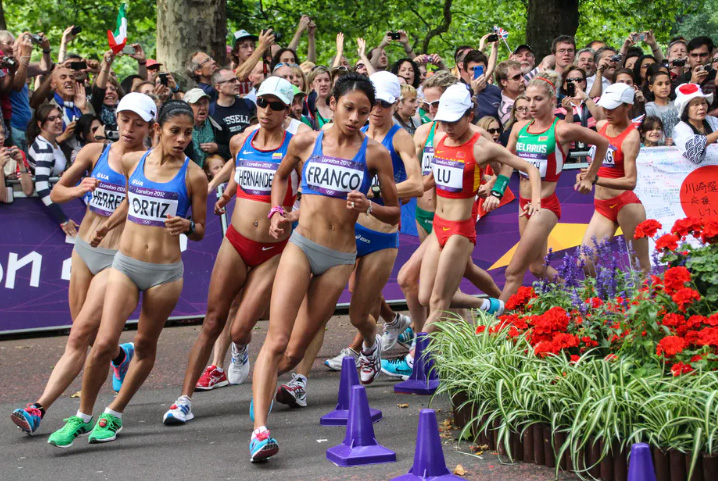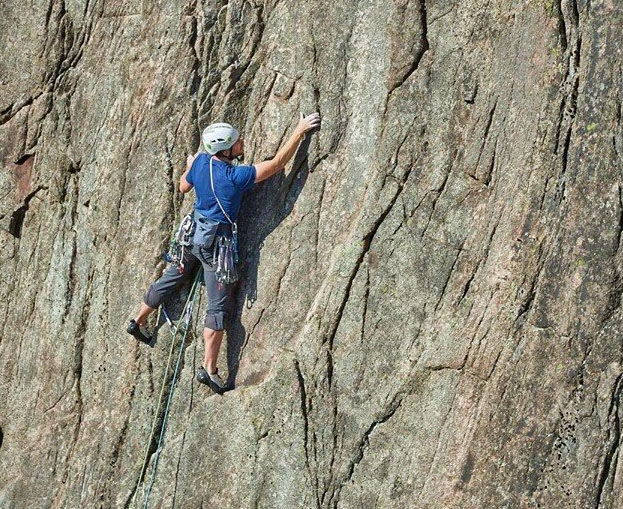
Home
Preamble
Index
Areas
Map
References
Me
Drakkar
Saunterings: Walking in North-West England
Saunterings is a set of reflections based upon walks around the counties of Cumbria, Lancashire and
North Yorkshire in North-West England
(as defined in the Preamble).
Here is a list of all Saunterings so far.
If you'd like to give a comment, correction or update (all are very welcome) or to
be notified by email when a new item is posted - please send an email to johnselfdrakkar@gmail.com.
This is one of several items about walking and walks from home during the
coronavirus lockdown of January - March 2021.
125. “Walking is not a sport”
 “Walking is not a sport” is the very first sentence of Frédéric Gros’s book A Philosophy of
Walking (Gros, 2014). Gros should inform the International Olympics Committee. It has been
awarding medals for walking since 1908.
“Walking is not a sport” is the very first sentence of Frédéric Gros’s book A Philosophy of
Walking (Gros, 2014). Gros should inform the International Olympics Committee. It has been
awarding medals for walking since 1908.
Right: The women’s 20 km walk at the 2012 London Olympics.
Wittgenstein famously wrote about the concept of a ‘game’, concluding that it
was impossible to give a precise definition of the concept, since there is no one feature that
formed a common element of all games. Instead, there is a complicated network of similarities
and relationships, overlapping and criss-crossing.
Gros is no Wittgenstein. He asserts
that “sport is a matter of techniques and rules,
scores and competition, necessitating lengthy training … and also obviously means cultivation of
endurance, of a taste for effort, for discipline”. Walking is not a sport, he says, because “putting
one foot in front of the other is child’s play”.
Maybe something has been lost in translation but this seems extraordinarily simplistic for
a philosopher. I’d be more inclined to say that most sports are child’s play, or at least are derived
from child’s play: running, swimming, jumping, kicking a ball, cycling, wrestling, and so on. Consider,
for example, swimming. Most people can swim. Very few people swim competitively. When people go to
their local swimming pool they usually go for exercise, for their mental and physical well-being, and
maybe for camaraderie, but not for competition. Is swimming a sport? Is a swimming pool a sports
facility?
Is walking less of a sport than swimming? If so, in what way? Some say that competitive walking
looks weird – but at least there’s only one way to do it, as defined by the rules. There are several
weird ways to do competitive swimming. Is there any other sport that you can do
backwards? And ‘butterfly’, what’s that all about? Perhaps, to become recognised as a real sport, walking
needs Olympics events for silly walks, as in the
Ministry
thereof. Even for ‘serious sports’ there’s a lot of silliness or childishness.
I find it hard not to laugh at a rugby scrum, especially when it keeps collapsing.
However, as the
activity becomes more serious it becomes less sport. How often do we hear, usually about
football, that “it’s not a game anymore; it’s a business”? Sport is a frivolous activity that is
taken seriously but not too seriously. It occupies the space in the spectrum between pastime and business.
 Left: In its 'Sport in Lakeland' chapter, the Baddeley book devotes more pages to fell-climbing than
to any other activity.
In what way is fell-climbing more of a sport than fell-walking?
Left: In its 'Sport in Lakeland' chapter, the Baddeley book devotes more pages to fell-climbing than
to any other activity.
In what way is fell-climbing more of a sport than fell-walking?
The second chapter of the venerable Baddeley (1880, 1922) guide to the Lake District is
entitled “Sport in Lakeland”. It describes climbing (in 187 lines – I’m giving the number of lines
to indicate the relative importance of the sport, according to Baddeley), angling (164 lines),
fell-walking (56 lines), fox-hunting, beagles and otter hounds (38 lines), golf (28 lines), ice and
snow sports (16 lines), yachting and boating (9 lines), tennis and bowls (5 lines) and
swimming (0 lines). How many of
those have the rules, scores and competition that Gros requires of a sport?
The entry on fell-walking is not as you might expect. It is not concerned at all with
walks such as an amble up Loughrigg Fell. It is entirely about very long ‘walks’ up many fells.
Fell-walking seems to have been included in the chapter on sport because a few people pursued extreme
versions of it, which is odd because none of the other sections are concerned with extreme versions
of the activity.
The latest entry in the fell-walking section of my 1922 edition is
a ‘walk’ of 21 hours 25 minutes over 19 named summits,
covering 90 miles and involving a total ascent of 22,500 feet. Nobody can walk that distance over
mountains in that time. It was a run, at least partly. It was clearly a competitive activity
– to get to more tops or to get to them quicker. Today, there are fell-races and long-distance
challenges and, of course, the activity of peak-bagging but most people on the fells are there, like
those swimmers in the pool, river, sea or lake, for exercise, for their mental and physical well-being, and
maybe for camaraderie.
Does it matter whether walking is a sport? Not really, except that I notice that the
government’s roadmap out of lockdown says that, all being well
(or at least a sufficient proportion of all being well), on March 29th
“outdoor sports facilities such as tennis and basketball courts, and open-air swimming pools, will
... be allowed to reopen, and people will be able to take part in formally organised outdoor sports” and
“the ‘stay at home’ rule will end”.
People will be able to travel to swimming pools and then mingle with other people when using the changing rooms,
showers, pools, and so on. Whether or not walking counts as an outdoor sport, it
is surely safer for me to travel alone (or with Ruth), to mingle with
nobody, to touch nothing, and to use as my ‘sports facility’ the natural world.

The Great North Swim, in Windermere, with Bowfell and the Langdales beyond
Date: March 27th 2021
Start: home; Route: various; Distance: not far
(but far enough to see that the herons (Sauntering 85)
are nesting again and the sand martins (Sauntering 79)
haven't arrived yet); Ascent: not much
Home
Preamble
Index
Areas
Map
References
Me
Drakkar
© John Self, Drakkar Press, 2018-

Top photo: The western Howgills from Dillicar;
Bottom photo: Blencathra from Great Mell Fell


 “Walking is not a sport” is the very first sentence of Frédéric Gros’s book A Philosophy of
Walking (Gros, 2014). Gros should inform the International Olympics Committee. It has been
awarding medals for walking since 1908.
“Walking is not a sport” is the very first sentence of Frédéric Gros’s book A Philosophy of
Walking (Gros, 2014). Gros should inform the International Olympics Committee. It has been
awarding medals for walking since 1908.
 Left: In its 'Sport in Lakeland' chapter, the Baddeley book devotes more pages to fell-climbing than
to any other activity.
In what way is fell-climbing more of a sport than fell-walking?
Left: In its 'Sport in Lakeland' chapter, the Baddeley book devotes more pages to fell-climbing than
to any other activity.
In what way is fell-climbing more of a sport than fell-walking?

